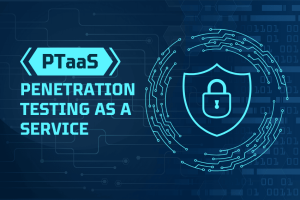Businesses maintain their success through Conversational AI chatbot and assistants that optimizes employee work output and simplifies workflow management, also improves team member interaction. Organizations face difficulties when it comes to choosing suitable AI solutions because various AI-based systems have distinctive operational methods.
Conversational AI chatbot and assistants represent the two main available options although they provide different functionalities. Selecting an inappropriate AI solution leads to operational problems that waste resources and displease users. Your organization needs to comprehend the essential differences between Conversational AI chatbot vs assistants for making an informed selection about which solution will address their needs.

This article explains how Conversational AI chatbot and assistants differ fundamentally while demonstrating their specific employee support applications alongside their strengths and weaknesses, together with selection consideration factors for the best AI technology for workforce needs. From reading this discussion you will learn about which system between Conversational AI chatbot and assistants would best serve your organization.
What is a Conversational AI Chatbot?
The program, known as a Conversational AI Chatbot takes care of structured and repetitive interactions through automated logic processing systems and artificial intelligence-powered responses. Chatty systems operate from well-defined instructions which makes them perform well when managing easy tasks that don’t need complicated understanding.
Stepping into the organizational environment, one can witness chatbots function as contact points for client inquiries about standard questions while IT assistance teams and simple operational activities run through their automated systems.
An HR chatbot system demonstrates effectiveness when answering employee questions about organizational policies through an inquiry such as “What is our leave policy?” An employee’s complex request for example, “How do I apply for parental leave while working remotely from Spain?” may cause the chatbot to give only a typical policy response.
Despite their limitations in handling nuanced conversations, AI Chatbots are widely implemented due to their cost-effectiveness and scalability. They can efficiently handle high volumes of employee queries, reducing the burden on human support teams while ensuring consistency in responses.
What is an AI Assistant?
Internet Assistants surpass chatbots through their context-based functionality with Natural Language Processing, along with Machine Learning and Voice Command and Text and Image support capabilities. An AI Assistant demonstrates superior functionality because it can identify user intent and learn from interaction history to provide individualized assistance that goes beyond what chatbots can do.
AI Assistants achieve comprehensive system integration, which allows them to connect smoothly with Customer Relationship Management (CRM) platforms, Enterprise Resource Planning (ERP) software, and Human Resource Management Systems (HRMS). The system enables staff support beyond basic question-answer sessions by providing significant assistance to employees.
AI Assistants examine employee email together with calendar data and historical communication patterns to continuously recommend actions such as “you will join a meeting in 10 minutes.” A notification about your late arrival should be sent to the team, while you might miss this meeting.
AI Assistants provide predictive and customized support, which optimizes workplace performance by delivering accurate insights to each employee according to their requirements.
Conversational AI Chatbot vs Assistants: The Main Difference
The main gap between AI Chatbots and AI Assistants appears in their ability to learn and process context while also connecting to other tools. Chatbots achieve their functions with either pre-defined rule and basic natural language processing capability suited for automated responses in straightforward repetitive applications. AI Assistants bring their strength from sophisticated AI models specifically large language models (LLMs) including GPT-4 and Claude to perform advanced conversational functions and make complex decisions.
The integration capabilities of AI Assistants surpass those of AI Chatbots, which limit their connection to communication tools through basic APIs. AI Assistants achieve deep connectivity, which enables them to automate complex processes that involve workflow processing and user behavior analysis, along with business process automation functions.
Additionally, AI Chatbots have limited memory and cannot recall past interactions, whereas AI Assistants can remember previous conversations and adapt accordingly. This ability to learn from past engagements allows AI Assistants to provide a more human-like, conversational experience that evolves.
The proper context determines whether a chatbot or an AI assistant should be implemented
Conversational AI Chatbot vs Assistants: Use Cases
Conversational AI Chatbot
Chatbots demonstrate high effectiveness by automated execution of repetitive activities running through preconfigured structures. The HR and IT helpdesk domains benefit from these systems because they enable quick delivery of standard employee information, including organizational rules and password recovery services and basic computer support.
Chatbots support new employee onboarding through automated steps that correctly guide personnel through essential documentation and training schedules as well as policy briefings. Company policies together with department contacts become readily available to employees through chatbot interactions before workers must search through lengthy internal knowledge bases.
AI Assistants
Complex and dynamic workflows require the superior capabilities found in AI Assistants that make them a better choice compared to other alternatives. With their analytical capabilities, these systems process emails to provide relevant recommendation actions and perform automatic meeting note generation, followed by invoice deadline detection through contextual analysis.
Enterprise AI Assistants promote efficient decision-making through automation of multi-level managerial processes and management of workflow interactions between company departments. The system helps professionals build their skills through predictive assistance because it can identify specific areas where employees need additional training. The integration of sentiment analysis with AI Assistant tools enables staff burnout detection to inform managers which prompts organizations toward timely worker support initiatives.
Conversational AI Chatbot vs Assistants: Advantages
Conversational AI Chatbot
The leading advantage of AI Chatbots lies in their ability to reduce operational costs effectively. These systems need less development funding and upkeep spending and work effectively for business automation on an affordable budget. Many chatbots benefit from quick deployment processes because numerous pre-made and low-code chatbot solutions can be implemented readily. They function at maximum capacity while handling large numbers of repeated queries.
AI Assistants
AI Assistants provide smarter, more human-like interactions by utilizing advanced NLP and ML algorithms. They can anticipate employee needs, offer proactive suggestions, and integrate seamlessly with enterprise applications. These intelligent systems enable businesses to improve operational efficiency by automating complex decision-making tasks.
Conversational AI Chatbot vs Assistants: Disadvantages
Conversational AI Chatbot
Despite their usefulness, AI Chatbot is inherently limited by their reliance on scripted responses. They struggle to handle ambiguous or complex queries and cannot recall past interactions, resulting in a less personalized experience for users.
AI Assistants
The primary drawback of AI Assistants is their higher cost, as developing and maintaining a custom AI model requires significant investment. Additionally, they introduce data privacy concerns, as they process sensitive employee data, necessitating robust security and governance frameworks. Implementation can also be time-intensive, as integrating AI Assistants into existing enterprise systems requires careful planning and technical expertise.
How to Choose the Right Solution for Your Employees
The selection process between AI Chatbots and AI Assistants needs organizations to consider business requirements. An AI Chatbot works as an effective solution for automated repetitive work while offering cost-efficient performance. The price-to-performance ratio indicates that a company should use an AI Assistant instead of an AI Chatbot to deliver adaptive support to customers.
The pricing for AI Chatbot solutions spans between $5,000 to $50,000 and AI Assistant solutions extend from $50,000 to $500,000 or exceed that amount based on customization requirements and integration levels.
Real-World Examples of AI Chatbots and Assistants in Enterprises
Leading organizations across different sectors currently use AI Chatbots and Assistants for enhancing both employee relations and workplace operational efficiency. IBM’s Watson AI provides HR departments with a platform to resolve all employee benefit questions, together with policy questions and payment inquiries. Human Resources teams dedicate their time to vital strategic projects when they implement automated services for repetitive inquiries.
The Deloitte organization has incorporated AI Assistants that assist workers by scheduling meetings along with report summary creation and business database search capabilities. The AI systems use previous dialogues to improve their recommendation accuracy as they learn through experience.
The banking industry employs AI-powered assistants to manage compliance questions which frees up human resources while achieving strict regulatory standards. Organizations achieve time savings alongside operation efficiency and precision through their implementations of AI solutions.
Security and Privacy Considerations in AI Implementations
Organizations need to address security together with privacy requirements because AI-driven solutions gradually integrate into workplace operations. AI Chatbots and Assistants perform operations on various employee-sensitive information including employee personal information together with company internal messages and business proprietary material. The lack of proper security measures turns these systems into accessibility points for cyber-attacks.
Unprotected voice-enabled AI Assistants become a privacy risk because their conversation recordings and analysis lack proper encryption. AI systems need to meet all requirements of GDPR and HIPAA and CCPA data protection standards to ensure secure employee information storage.
The use of AI computing directly on devices functions as an essential risk reduction method because it decreases cloud-based storage dependence. Federated learning functions as an emerging solution by allowing the training of AI models through procedures which maintain data security. Organization requires role-based access control (RBAC) for safeguarding sensitive information together with systematic audit procedures to find security flaws.
How AI Can Improve Employee Well-Being and Work-Life Balance
Alongside automation AI assistants serve as tools that generate benefits for employee welfare. The main office issue today is employee burnout because employees face both severe workload and insufficient work-life balance. AI Assistants serve to alleviate this problem through the automation of repeated work tasks as well as featuring break scheduling features which combine with sentiment monitoring capabilities.
AI systems with emotion detection capabilities measure employee voice patterns and communication patterns to identify how stressed or frustrated someone is by their tone and writing style. When employees perform many overtime shifts the AI system will send notifications both for break suggestions and manager alerts concerning burnout threats.
AI-powered assistants’ function by suggesting mental wellness programs and providing stress-relief activities, and encouraging workers to maintain work-non-work boundaries. The incorporation of AI technology into welfare programs allows organizations to strengthen their workplace health conditions while boosting staff satisfaction levels.
Future AI Trends in Workforce Automation and Digital Transformation
Technological progress in Artificial Intelligence shows that workplace automation trends will keep advancing at a fast pace. AI-powered workforce management will experience these primary changes in its future development:
Hyper-Personalized AI Coaches
AI Assistants will shift from performing tasks to helping employees grow their careers as career growth advisors. Artificial Intelligence-powered coaching systems evaluate worker capabilities before they suggest suitable training content alongside suitable job postings from within the organization that match employees’ professional objectives.
Voice-First AI Assistants
AI solutions under voice-first control will expand their market presence since hands-free technology and smart wearables become increasingly popular. Workers in field positions as well as medical staff and warehouse workers will connect to AI Assistants through vocal commands instead of screen interfaces or typing panels.
AI-Powered Sentiment Analysis
The next generation of AI Helpers will use improved sentiment detection, which enables organizations to track employee sentiment patterns through ongoing monitoring. Workplace challenges will become easier to manage through initial analysis provided by HR teams which enables them to resolve problems before major issues emerge.
Self-Learning AI Systems
The self-learning aspect of AI Assistants enables them to grow without manual updates which stands in contrast to standard AI requirements for continuous software maintenance. The systems will automatically adjust to organizational changes as well as new business processes while adapting without manual help to user preferences.
Conclusion
The market provides Conversational AI chatbot at a cost-effective price which helps businesses to rapidly implement automation tools for answering FAQs and running basic workflow operations. Chatbots from this market enable organizations to manage large amounts of repetitive questions which creates space for employee concentration on more essential work. The solution proves beneficial to organizations that need affordable solutions to scale their internal support operations.
AI Assistants deliver an improved, sophisticated, intelligent, adaptive interaction model compared to other systems. AI Assistant investment brings enterprises deeper system connectivity and enhanced individual employee services alongside forecasting tools that reinforce operational effectiveness through continuous development. The learning ability of AI Assistants combined with their complex request comprehension and automatic recommendation generation makes them an optimal choice for corporations that seek to boost work-related productivity and strategic decisions.
Organizations need to match their selected AI solution to fit their operational requirements and financial structures and organizational growth plans. Businesses seeking workplace improvements through AI should decide between basic chatbots for automation and advanced AI assistants for digital transformation because both enhance operational performance and employee interaction.


